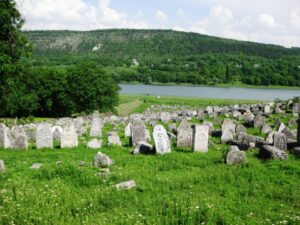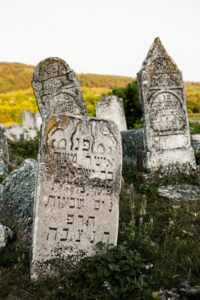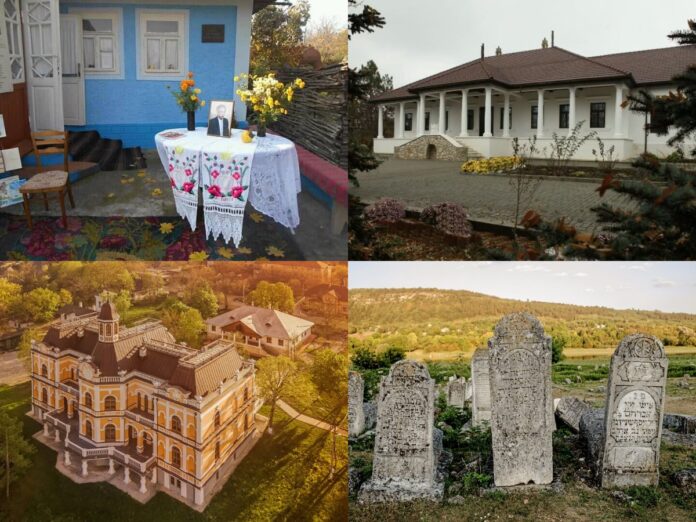Dumitru Matcovschi Memorial House
The ”Dumitru Matcovschi Memorial House” is a museum dedicated to the renowned Moldovan poet and playwright Dumitru Matcovschi. Located in Vadul-Rascov, near the Nistru River, the museum offers a glimpse into the life and works of Matcovschi, preserving an authentic representation of his home environment.
Visitors are first greeted by the beautiful natural scenery surrounding the house and can then explore the room where the great poet spent his childhood. In this room, they can even touch the typewriter that Matcovschi used for decades. According to his sister, Dumitru Matcovschi wanted to preserve the furniture, curtains, and windows exactly as they were during that time. As a result, entering the house evokes the spirit of the 20th century.
Another room showcases the period furniture and decor, while a wall displays the Matcovschi family genealogy. In the third room, guests can browse and admire the poet’s works and leave their thoughts in a guestbook for impressions and comments.

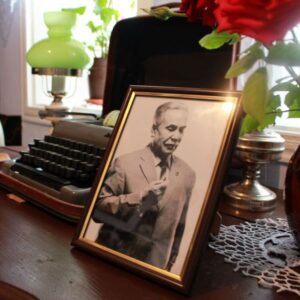
Antioh Cantemir Art Gallery
The ”Antioh Cantemir Art Gallery” is an art gallery in Balti, Republic of Moldova. The municipal gallery was established in 1973 and hosts an extensive collection of European and local paintings. Initially, the gallery was located in the Palace of Culture. The gallery organizes approximately 40 annual events, including exhibitions by decorative art masters, chamber concerts, and competitions, which attract city residents, guests, and groups of pupils and students. Currently, the gallery features ”The Wood Exhibition” by craftsman Dumitru Cosulean, running until December 15, 2023.
The next exhibition, titled The Jubilee Exhibition of Student Works “A Carol for the Country”, opens on December 26 and will run until January 31.
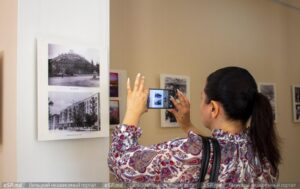
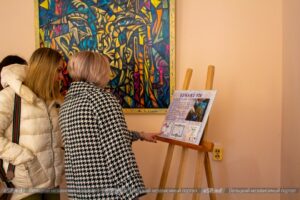
The Manuc Bei Manor
The Manuc Bei Manor, officially known as the Manuc Bey Historical and Architectural Complex, is located in Hincesti, central-western Moldova. It includes notable buildings such as the Manuc Palace, the Steward’s House, the Countess’s Building, the Hunting Castle, and a Watchtower.
Despite bearing his name, the manor wasn’t built by the Armenian diplomat and merchant Manuc Bei Mirzaian, who died shortly after acquiring the Hincesti estate in 1817. His son, Murat (Ivan), started the construction, and it was completed by his grandson, Grigore. They created a French-style castle with a winter garden, watchtowers, and an expansive park.
Significantly, after WWII, the manor came under Soviet control, serving first as a mechanization school and later as a construction college. The 1986 earthquake caused severe damage, leaving only the Hunting Castle intact, which became an ethnographic museum. In 1993, the manor was designated as an architectural monument. By 2012, the complex was in a state of significant disrepair, except for the Hunting Castle.
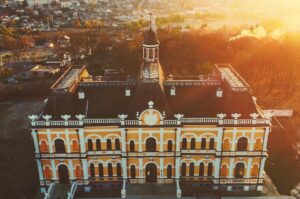
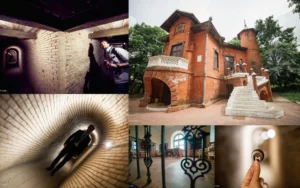
FOR THE MOST IMPORTANT NEWS, FOLLOW US ON TWITTER!
Alexei Mateevici Memorial House
The Alexei Mateevici Memorial House is located in the village of Zaim, Causeni district, approximately 70 kilometers from Chisinau. It was established in 1988 to commemorate the centenary of the poet. The museum’s official opening took place on March 26, 1988, marking 100 years since Mateevici’s birth.
The building was constructed by his father, priest Mihail Mateevici, and the museum was founded by Ion Gaina and Mihail Moraru. A monument was erected in the museum’s courtyard in 1990, and the facade features a plaque with Mateevici’s image.
The Mateevici family resided here between 1893 and 1907. The museum showcases a wide array of original items, including paintings and sculptures of the poet, documents, books he wrote and signed, family photographs, and personal belongings. The collection includes over 7,000 pieces, such as seven paintings, four sculptures, 132 household items, 510 photographs, more than 100 documents, and period literature.
The museum reflects the past era through its art, documents, rare books, and period furniture. It comprises three permanent exhibitions: the Room with the Bust, the “Eu cant” Room, and the “Limba noastra” Room, alongside three memorial rooms: the Parents’ Room, the Children’s Room, and the Mateevici Family Library. One unique feature is the “Table of Silence,” holding soil from the graves of Romanian literary figures such as Mihai Eminescu, I. L. Caragiale, George Cosbuc, and Mihail Sadoveanu, as well as the graves of Mateevici’s parents.
Lazo Manor
The Lazo Family Manor, a national architectural monument, is located in the village of Piatra, Orhei district, Moldova. Built in the late 19th century, the manor features a design resembling traditional peasant houses, with rooms arranged around a central hall.
The last owners were Gheorghe and Elena Lazo, the parents of the legendary hero of the Russian Civil War, Sergei Lazo. During the interwar period, the manor housed a school, and after the school’s relocation in 1967-68, the manor was reconstructed and transformed into a museum dedicated to Sergei Lazo. It became a branch of the National Museum of History.
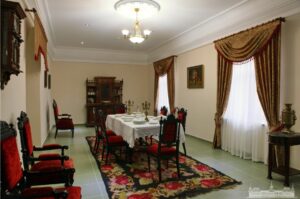
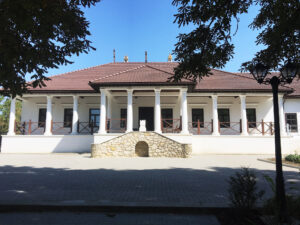
The Vadul Rascov Jewish cemetery
Vadul Rascov, located along the upper course of the Nistru River, was once a renowned market town in the Soldanesti region. After the annexation of Bessarabia by Tsarist Russia in 1812, Jewish migrants from Russia and Poland settled here, leading to the establishment of a small Jewish cemetery. By the late 19th century, Vadul Rascov had about 200 local families and over 500 Jewish families.
Just before World War II, the town had one Christian Orthodox church and seven synagogues. During the war, the Jewish quarter was burned, and while the church was destroyed, the bell tower remained untouched. The cemetery, which continues to expand over the years, is believed to have over 6,000 gravestones. Most inscriptions are in Hebrew, making it difficult for non-speakers to interpret the texts without a translator.
The Vadul Rascov Jewish cemetery is considered the largest in Moldova and one of the largest in Southeast Europe, though no Jewish families remain in the village today. Occasionally, descendants of those who once lived here return to visit the graves, particularly those who migrated to Israel or elsewhere.
